History of the slap: From its treatment for hysteria to Ahed Tamimi's confrontation with an Israeli soldier
In the 19th century, the slap was considered a beneficial treatment... perhaps it’s time to move on
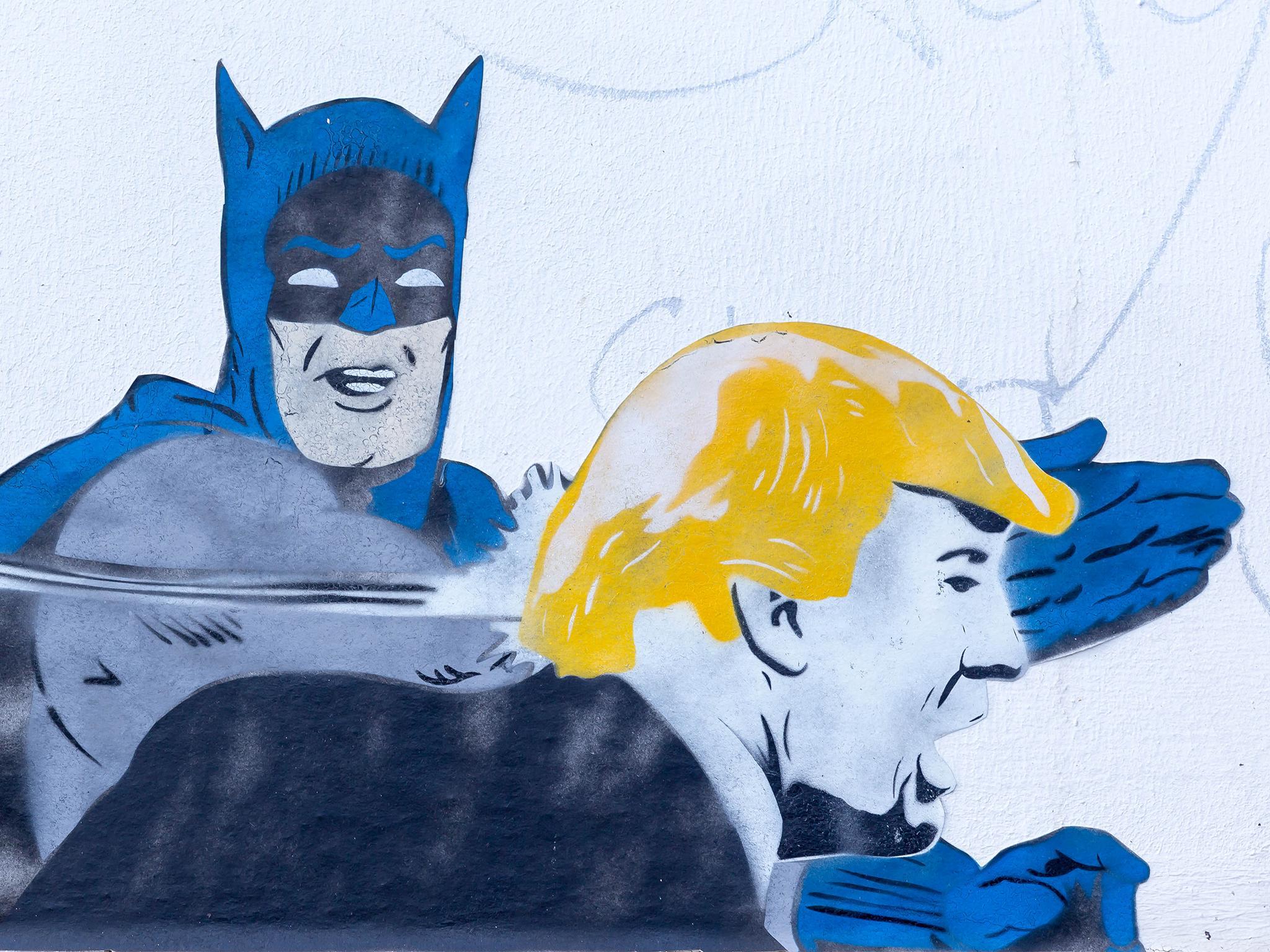
Your support helps us to tell the story
From reproductive rights to climate change to Big Tech, The Independent is on the ground when the story is developing. Whether it's investigating the financials of Elon Musk's pro-Trump PAC or producing our latest documentary, 'The A Word', which shines a light on the American women fighting for reproductive rights, we know how important it is to parse out the facts from the messaging.
At such a critical moment in US history, we need reporters on the ground. Your donation allows us to keep sending journalists to speak to both sides of the story.
The Independent is trusted by Americans across the entire political spectrum. And unlike many other quality news outlets, we choose not to lock Americans out of our reporting and analysis with paywalls. We believe quality journalism should be available to everyone, paid for by those who can afford it.
Your support makes all the difference.Consider the slap. The open palmed smack across the face. It carries with it a multitude of connotations. It has been a device for chastising children, for calming down hysterical women, for asserting authority, for telling someone they’ve gone too far.
It is, as you might expect, the sort of thing that can get you in trouble these days. It can even land you in jail.
Ahed Tamimi turned 17 last week, and is currently languishing in an Israeli prison with her mother Nariman as they await trial following an incident on 15 December in the West Bank. Palestinian Ahed confronted Israeli soldiers who were on her family’s land. Ahed’s 14-year-old cousin was shot in the head with a rubber-coated bullet and moments later Ahed is seen, in a video which went viral, delivering a stinging slap to the face of one of the soldiers.
The image of Ahed’s slap is a powerful one, not only for its force and anger but also because it is a political statement. And one that has been used, or threatened, on bigger stages than the West Bank.
In 2011 the International Atomic Energy Agency released a report that said Iran was working on developing nuclear weapons, which brought down the ire of the international community. Ayatollah Ali Khamenei responded with a warning against any potential military action to tackle Iran’s nuclear programme: “If the thought of invasion against the Islamic Republic of Iran crosses anybody’s mind he must ready himself to receive a strong slap and iron fist.”
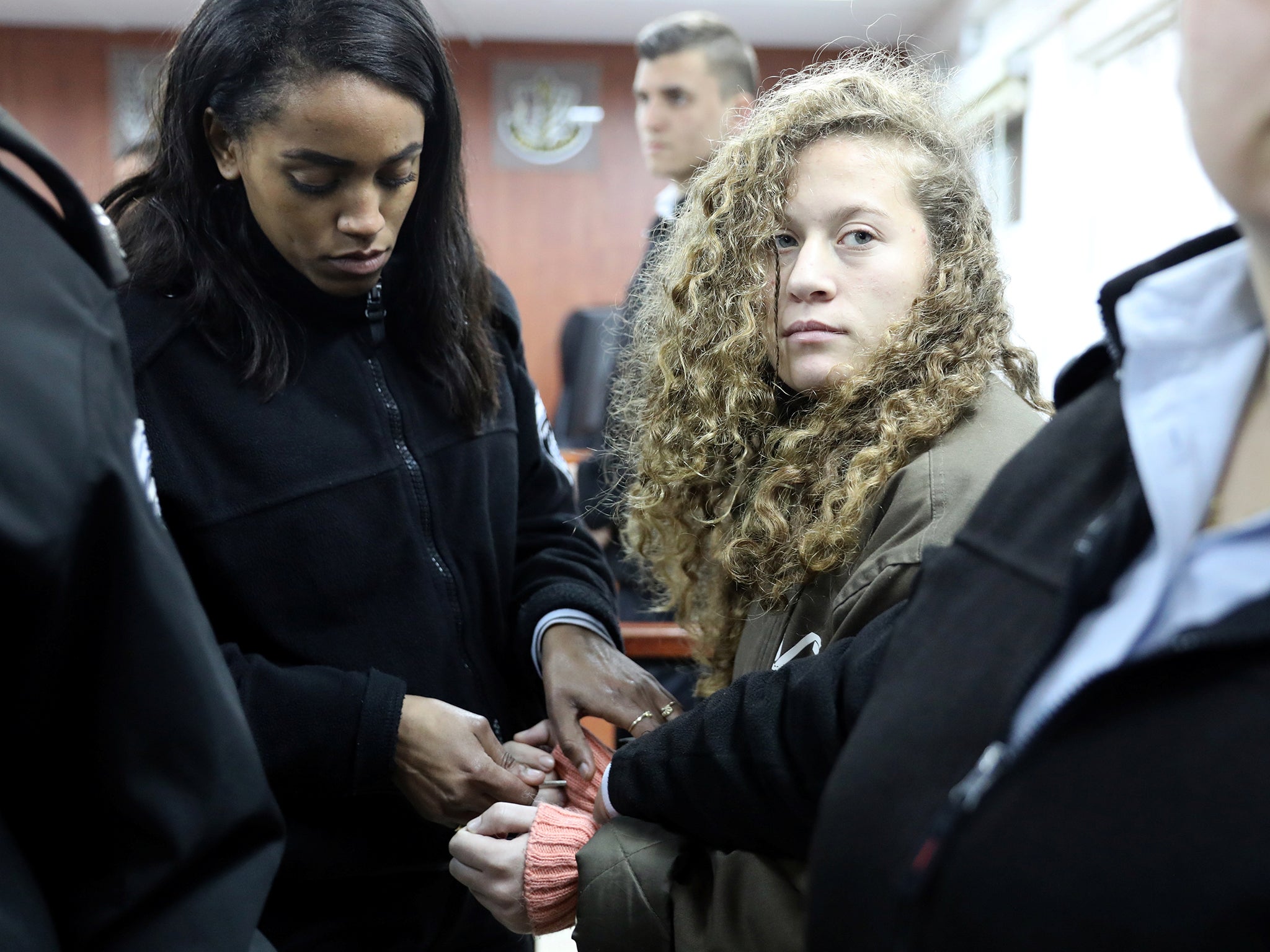
An iron fist we can all understand; why a slap? Why do we slap at all? Perhaps because the open-handed strike doesn’t do as much damage as a closed-fist punch to the face. It hurts, but a stung cheek is not as painful as a broken nose. It is a short, sharp shock, perhaps a warning of worse to come, or to signal an intention without causing much damage.
Indeed, in the 19th century, a slap was considered quite beneficial. Doctors treating women with “hysteria” – not an actual condition, it must be noted – would often advocate a swift slap to the face to bring them out of it. They also suggested throwing cold water over them and even practised bringing women to orgasm (the invention of the vibrator is actually attributed to this medical practice), but the simplest and easiest way to stop hysteria (a catch-all term for any psychological disorder affecting women) in its tracks was to smack them one across the face. But does it actually work?
“Absolutely not,” wrote medical and science journalist Brian Palmer for online magazine Slate in 2010. “Otherwise healthy persons may behave erratically in stressful situations, but a panic attack may also signal the beginning of a conversion disorder – when psychological stress causes physical symptoms such as loss of coordination, hallucinations, or imperviousness to pain. In rare cases, hysteria can indicate a serious underlying disorder like psychosis. No matter what the cause of a given episode, however, a slap won’t improve matters. On the contrary, it will likely only amplify the sufferer’s chaotic mental state, confirm his or her feelings of fear or paranoia, and possibly provoke counter-aggression.”
That didn’t stop the idea of the medicinal slap from enduring for quite some time, however. Agatha Christie’s 1939 novel And Then There Were None (originally published with a far less politically correct title) features the following passage: “She began laughing wildly again. Dr. Armstrong strode forward. He raised his hand and struck her a flat blow on the cheek. She gasped, hiccuped – and swallowed. She stood motionless a minute, then she said: ‘Thank you... I’m all right now.’”
The slap was a particular favourite of Hollywood in its golden age… and beyond. Real men would calm down hysterical woman with a gratefully received slap across the face, a trope that was parodied to fine effect in the 1980 comedy Airplane! as passengers on the stricken jet form a queue to hand out therapeutic slaps to a woman having a panic attack.
It was in Hollywood that there grew some measure of equality over the slap as women began to hit back. Very often, though, the smacker – usually in response to an argument or an unacceptable utterance by the man – was generally followed by the woman melting into his arms for a lingering kiss or some bedroom action, having made her point and demonstrated her feistiness chops.
The best examples of cinematic slaps include Bette Davis fetching Joan Crawford one in 1962’s classic Whatever Happened to Baby Jane?, Alan Ruck’s Cameron taking a surprisingly violent one from Matthew Broderick as they lay the groundwork for Ferris Bueller’s Day Off, and the neat inversion on the standard-issue slap in Moonstruck (1987), when Cher tells Nicolas Cage to “snap out of it!” with a solid one upside his head.
But the cinematic slap, as cartoonish and hackneyed as it has become, sometimes escapes from the movie lot. Why was Brian Palmer writing about slapping for Slate in 2010? Because the film star Mel Gibson had admitted hitting his then-girlfriend Oksana Grigorieva in a bid, according to court documents, “to bring her back to reality”.
When removed from the silver screen, a slap becomes something else. It becomes violence, it becomes abuse. Unless that slap is directed to a child, if the chorus of disapproval over plans to ban smacking in Wales are anything to go by.
The UK is one of the last bastions of being allowed to smack your child. Scotland banned the practice last year and Wales is in the throes of following suit. A good deal of Europe – Germany, France, Norway, the Republic of Ireland – has banned hitting children. For every report that is written, such as the one last year, that says corporal punishment makes children grow up to be violent and antisocial, the pro-smacking brigade will find another study such as the one in 2010 that claimed smacked children are more successful in life.
Smacking children is one of those endless polarising debates. On the one side, there are parents who think it is their right to punish their own children as they wish. On the other, those who believe that smacking is just violence perpetrated against small children by adults. In the middle, maybe parents who do not condone smacking but might, on extreme occasions, think that a slap to a child’s legs is the quickest way to stop them, say, sticking their fingers in a plug socket or running across a busy road.
A few years ago the debate was taken to an international level with the publication of Christos Tsiolkas’s novel The Slap in 2008. Later made into a TV series, the Australian writer’s book posited a situation where a man disciplines someone else’s errant child with a firm smack at a community barbecue.
The novel was as divisive as the issues it raised. The parents of the slap-ee, four-year old Hugo, are painted as wishy-washy liberals who have a raft of personal problems, not least secret jealousy that they’re slightly apart from the main group of middle-class neighbours. The slapper, Harry, is a bigoted and sexist alpha male. Nobody comes out of it well, but Tsiolkas doesn’t really offer any neat answers to the question of who is right. Are all smackers testosterone-fuelled deplorables? Are anti-smackers woolly lefties who can’t control their kids?
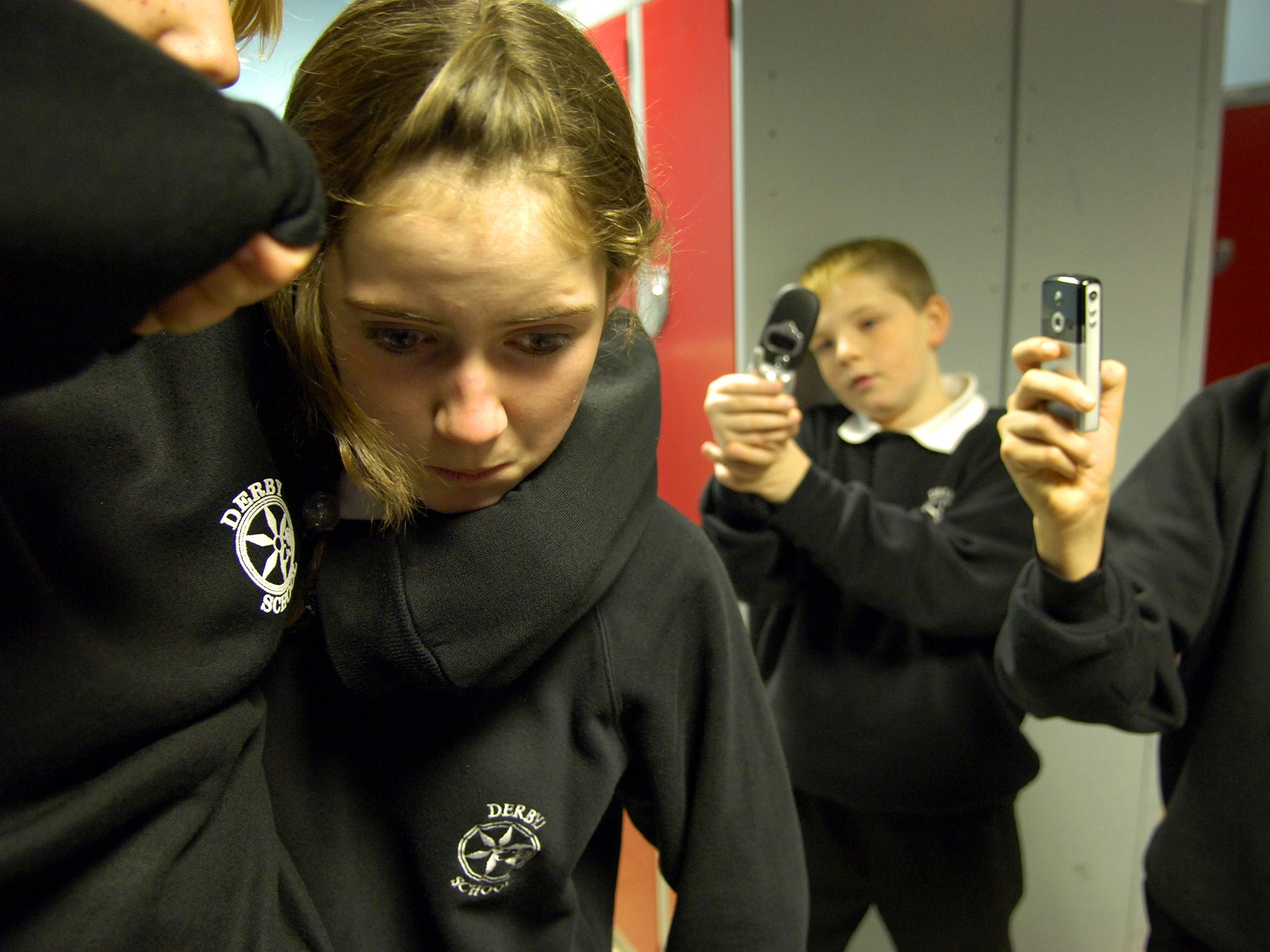
The internet age has given fresh traction to the slap – witness the fact that footage of Ahed Tamimi’s striking of the Israeli soldier went viral across the world within a very short space of time. The word slap has even earned its place in the lexicon of the internet, not least through the execrable craze of “happy slapping”.
A misnomer if ever there was one, happy slapping was a forerunner to the current trend for videoed challenges shared through social media. While putting washing tablets in your mouth or drinking vinegar are ill-advised, and could even be fatal, they’re positively benign compared to happy slapping.
Happy slapping originated around 2005, presumably as a quite innocent prank as young people were finding their feet with the capabilities of the internet. Smack someone across the face while someone else videos it, upload to the internet, everybody laughs. Well, apart from the person being slapped. But the mob mentality being what it is, happy slapping very quickly got dark. Full-on beatings and sexual assaults were deemed to fall under the banner. Then, in 2009, pensioner Ekram Haque was viciously beaten in front of his three-year-old granddaughter by a so-called happy slapping gang. He died from his injuries a week later, and two teenagers pleaded guilty of his manslaughter.
There’s even a recurring meme on the internet, a panel taken from an old comic book which shows Batman slapping his teen sidekick Robin. Why? Because in this 1965 non-continuity tale, Batman is convinced that Superman is responsible for the deaths of his parents and when the Boy Wonder takes issue with this Batman shuts him up with a slap. The image has been repurposed many times for comedic effect, often with Robin asking a stupid question. On one occasion Robin’s face was replaced by that of Donald Trump and Batman demanding: “Stop Tweeting!”
But, the slap as a physical act is perhaps on the wane, and it is more what it represents that has a foothold in modern society. The phrase “bitch slap” is popular, but increasingly less to do with an actual blow than a way of describing a successful disparaging put-down, or to explain how someone has exerted authority over another.
It’s misogynistic in origin and tone, of course, by its very definition; some point to it being coined to describe the way a pimp would chastise a prostitute, others as how two women would fight, yet a different definition sees it as how a stronger man might hit a weaker one to demonstrate that his smaller opponent could not handle the punch of a real man.
But perhaps Ahed Tamimi has brought the slap back into the real world. Whatever your views on the politics of Israel and Palestine and the West Bank, the image of a teenage girl smacking an armed soldier in the face is undeniably, and excuse the pun, a striking one.
Maybe the fact that it was delivered by a young girl is important. The slap came to prominence as a tool to suppress women considered to be suffering from invented maladies in the 1800s. Maybe Ahed Tamimi has, whether wittingly or not, reclaimed the slap. In the era of #MeToo and #TimesUp as women decide that the behaviour of men that has been normalised since time immemorial is to be challenged and overturned, it seems fitting that the slap should become another weapon in the armoury of this particular fight.
Top five movie slaps
Joe Sommerlad
Slaps have played an important role in cinema from its earliest days.
The physical comedy popularised in the silent era by Charlie Chaplin, Buster Keaton and their peers commonly revolved around a good whack across the chops with the flat of the hand, a crucial ante-upping gesture in disputes between protagonists. Their style was even known as “slapstick”, named after a wooden prop used by clowns to simulate a slapping sound.
Here are five archetypal examples of the silver screen slap in action.
Chinatown (1974)

At the close of Roman Polanski’s devastating noir, private eye JJ Gittes (Jack Nicholson) strikes the overwrought Evelyn Mulwray (Faye Dunaway) repeatedly to force her to confess the truth about her horrific past. Each time he bats her across the face, she gives a different answer. The act heightens the drama considerably.
Elsewhere, alpha males like Humphrey Bogart or Sean Connery striking women they deem “too emotional” to “bring them back to their senses” bespeaks the casual sexism of an earlier era.
Slaps frequently occur in noir. Pimp Johnny Prince (Dan Duryea) hitting escort Kitty March (Joan Bennett) in Scarlet Street (1945) reasserts his control over her and hints at the wider abuses going on in their toxic relationship. James Cagney’s famous grapefruit-in-the-face technique from The Public Enemy (1931) or Lee Marvin striking Gloria Grahame in The Big Heat (1953) with hot coffee serves the same vicious end.
Groundhog Day (1993)
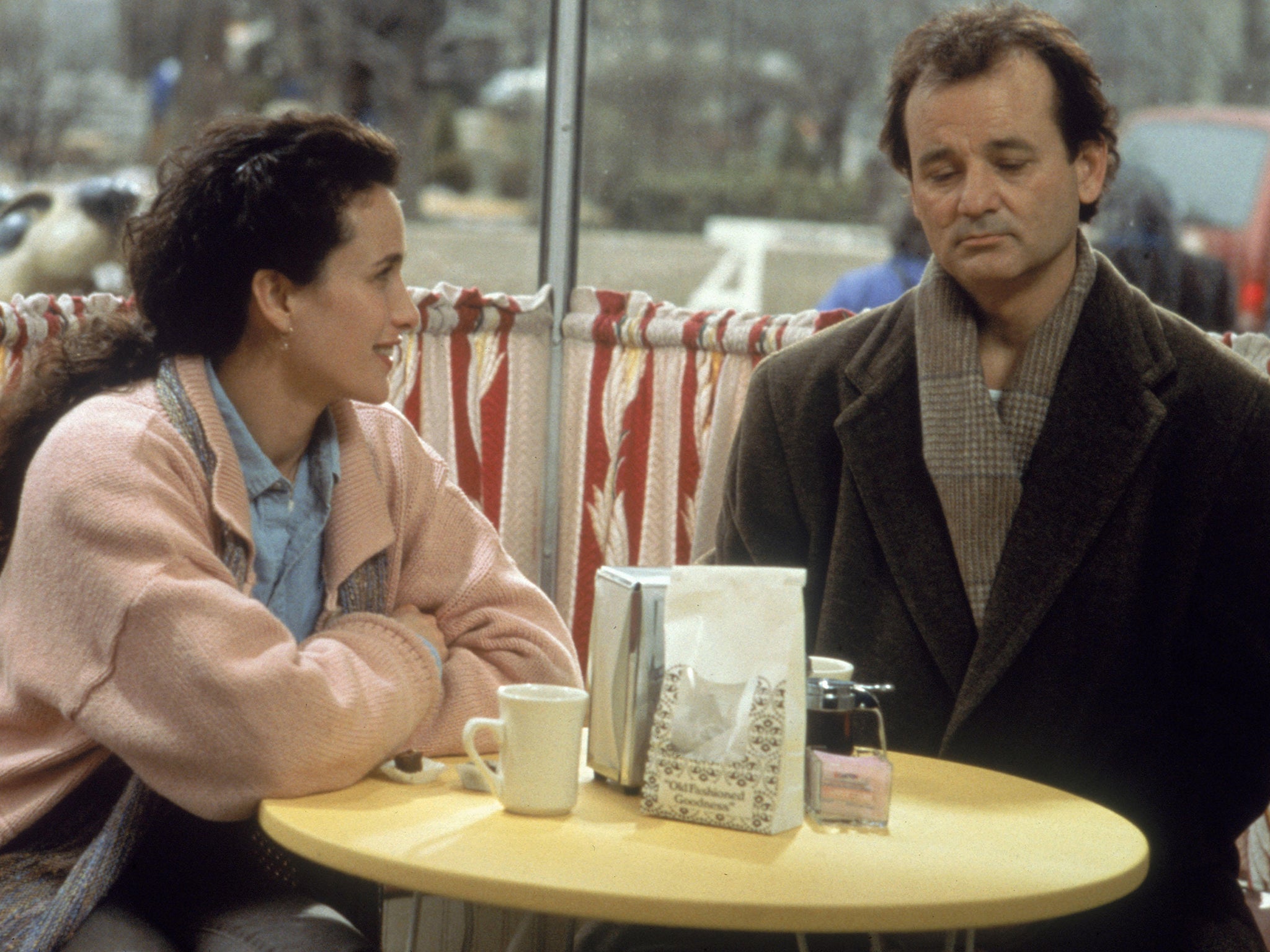
Bill Murray’s misanthropic weatherman is forced to relive the same day over and over again in Harold Ramis’s beloved comedy. Which means his failed attempts to woo Andie MacDowell day after day result in slap after slap, an effect hit home with a brutally funny montage that positively stings the cheek to watch.
A variation on this joke was lifted for the first Pirates of the Caribbean movie in 2003, incidentally, where Johnny Depp’s roguish Captain Jack Sparrow is repeatedly whacked for having, quite literally, a girl in every port.
While these slaps indicate rejection in the moment, they’re usually a prelude to romance, as in Groundhog Day, the man having ultimately proven himself to be a good egg after all (the Darcy trajectory). The brawling nature of the chemistry between John Wayne and Maureen O'Hara in John Ford’s The Quiet Man (1952) is a match of physical equals that ends in love, the slaps exchanged between them are a psychologically charged courtship dance.
The Maltese Falcon (1941)
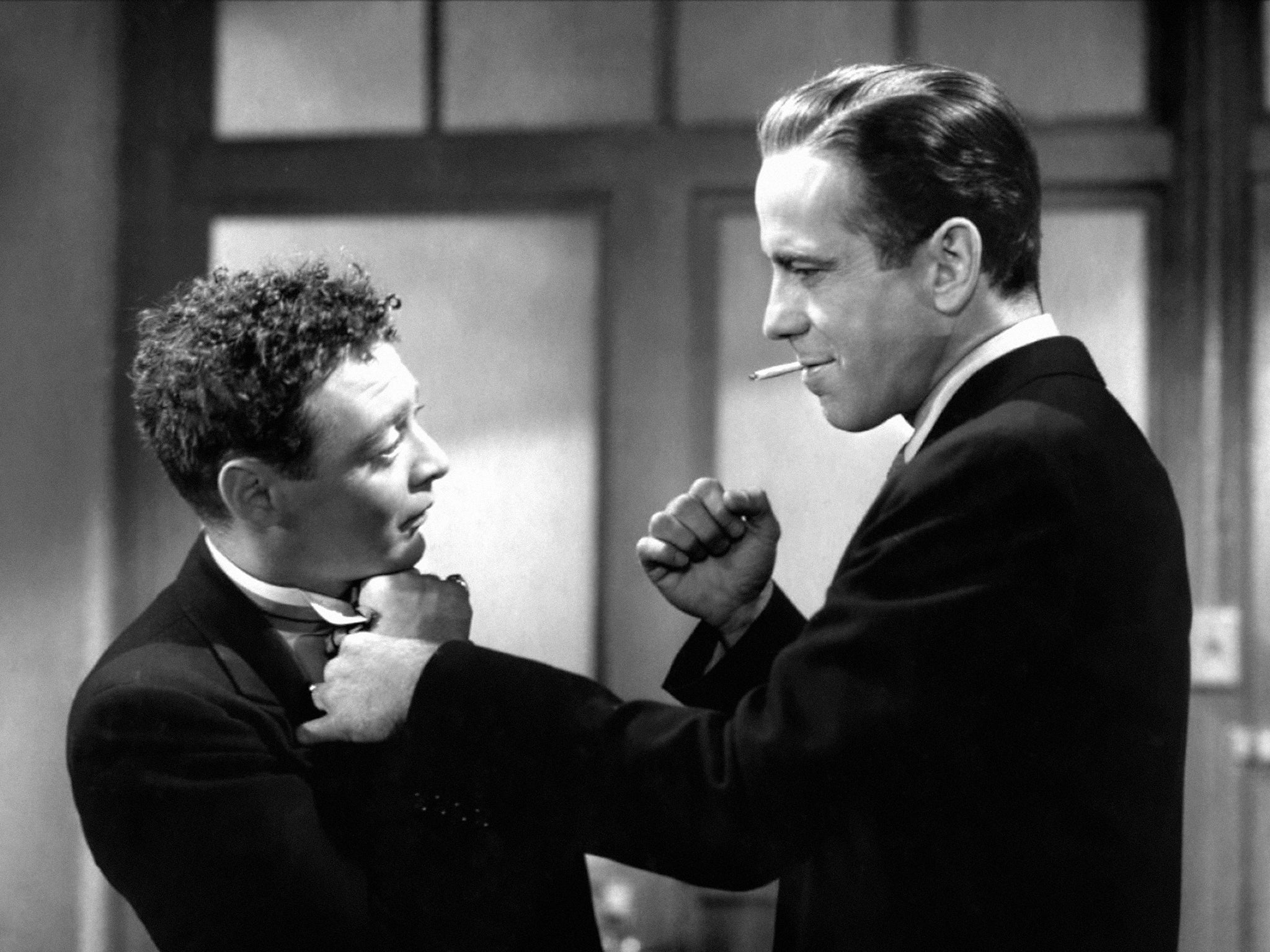
“When you’re slapped, you’ll take it and like it!” Humphrey Bogart saying this to Peter Lorre’s “gardenia-scented” gangster Joel Cairo in John Huston’s classic mystery adds an unmistakeable note of homoerotic, sadomasochistic menace to proceedings. Men slapping other men was once used as a clue to the audience that the (typically somewhat effeminate) characters may be more than just friends. See Alfred Hitchcock’s Rope (1948).
Men might also slap each other affectionately – the Italian American characters of Martin Scorsese movies like Mean Streets (1973) and Goodfellas (1990) – or in fits of religious fervour, as when Paul Sunday (Paul Dano) attempts to drive the demons out of Daniel Plainview (Daniel Day-Lewis) in There Will Be Blood (2007).
Duck Soup (1933)
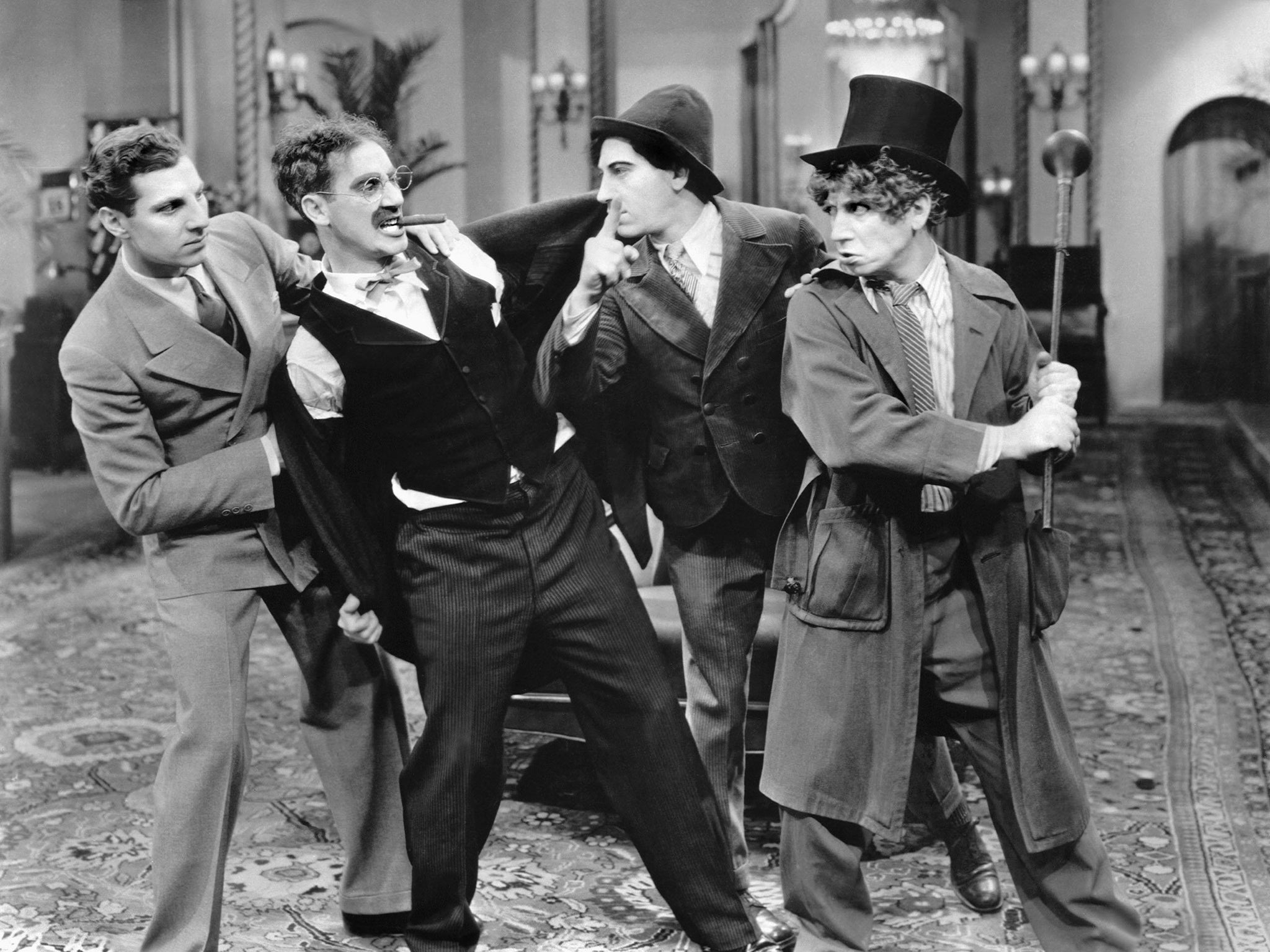
The slap that started a war! Groucho Marx works himself into such a fever over the possibility that the Sylvanian ambassador (Louis Calhern) might not shake his hand at the commencement of peace talks that, when the man himself duly appears, Groucho socks him, sending Freedonia spiralling into conflict.
Mildred Pierce (1945)

Women slapping other women is commonly presented in a comic way – and occasionally as titillation in sexploitation films like Russ Meyer’s Faster, Pussycat! Kill! Kill! (1965). However, in a work like Mildred Pierce, the psychodrama between mother and daughter erupts into vicious acts of violence that carry huge emotional heft. Joan Crawford may have been known as “Hollywood’s favourite masochist” for the suffering she undergoes here and in films like Whatever Happened To Baby Jane? (1962) but she dishes up a few severe slaps herself, not least in 1955’s Queen Bee.
Cate Blanchett lashing out and striking Judi Dench in Notes On A Scandal (2006) is interesting because it crosses the generation gap in a manner that is truly shocking.
Parents being slapped by their children is a trope used in Mildred Pierce but it’s one more common to horror films like The Exorcist (1973) or The Orphanage (2007).
Join our commenting forum
Join thought-provoking conversations, follow other Independent readers and see their replies
Comments